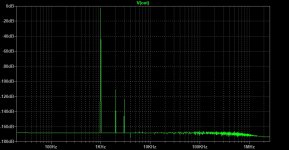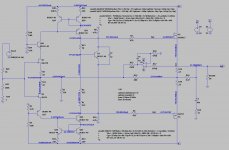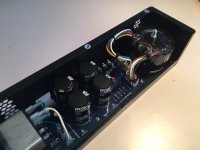@piotrl,use the toshiba 2SK2013 and 2SJ313.Circuit will have to be updated to deliver lower bias voltage, but that's it.Which resistors are to changes, the R15 and R16?To what value.
thanks Michael.
thanks Michael.
Virtually any change to the original design will change the sound. Jam mentioned in an interview they went through six design iterations on the power transformer alone...because like everything else it affects the sound.
@piotrl,use the toshiba 2SK2013 and 2SJ313.Circuit will have to be updated to deliver lower bias voltage, but that's it.Which resistors are to changes, the R15 and R16?To what value.
thanks Michael.
I did not experiment on the live circuit yet, but in order to use Toshibas, you need to bias them with about 2V less than Fairchilds. I did simulate this on the LTSpice and the only thing to change is the R15/R45 resistor to about 5k. See R13 on the attached schematic. That schematic is not exactly precise, it lacks few caps and uses different BJTs, but it is good enough for the purpose of this exercise.
I'm actually inspired by Jam's comment about building it as a dual mono with separate supplies. Why not? It will sound different, but that's the point, isn't it?
Attachments
I'll do the same thing and split up the grounds of the headphones with new cables and a 4-pin connector
I just got an EOL notice from Arrow on the Sanken 2SD2081 used in the PSU. They were already a bit hard to find, so if you're thinking you might ever want to build an HPA-1 now's the time to put a couple in a drawer (they're not expensive).
Hi Meldano,
Matching jfets will reduce distortion by a small amount mainly second harmonic but if the devices are reasonably close say 20% I would not worry about it.
You could also try changing the value of one or the source resistors to achieve a better balance and reduce any mismatch.
I am think about using an all bipolar input for my next design but it is too early for me to give you any definitive conclusions yet.
Regards,
Jam
Matching jfets will reduce distortion by a small amount mainly second harmonic but if the devices are reasonably close say 20% I would not worry about it.
You could also try changing the value of one or the source resistors to achieve a better balance and reduce any mismatch.
I am think about using an all bipolar input for my next design but it is too early for me to give you any definitive conclusions yet.
Regards,
Jam
Hi Jam,
thanks!
So you didn't detect any sonic benefits by increasing the distortions caused by „mismatch“ and would recommend good matching or change the source resistors?
Daniel
thanks!
So you didn't detect any sonic benefits by increasing the distortions caused by „mismatch“ and would recommend good matching or change the source resistors?
Daniel
Here some actual pictures from display integration…
Attachments
-
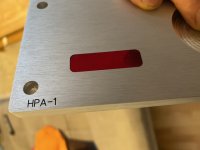 B89A3445-8D59-4EDD-A5E8-AC41C3F303F5.jpeg54.3 KB · Views: 402
B89A3445-8D59-4EDD-A5E8-AC41C3F303F5.jpeg54.3 KB · Views: 402 -
 BBE6C4E7-435B-41D5-9E94-4A6BDAF828CE.jpeg99.1 KB · Views: 380
BBE6C4E7-435B-41D5-9E94-4A6BDAF828CE.jpeg99.1 KB · Views: 380 -
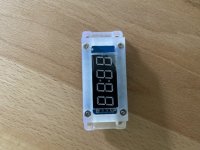 E76FEDEF-1237-49D9-A7AD-D6A853F10B7D.jpeg96.1 KB · Views: 377
E76FEDEF-1237-49D9-A7AD-D6A853F10B7D.jpeg96.1 KB · Views: 377 -
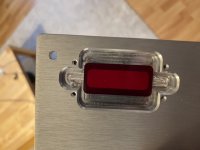 31946842-D14E-4EBA-9FF4-621EDA24AEC4.jpeg60.9 KB · Views: 372
31946842-D14E-4EBA-9FF4-621EDA24AEC4.jpeg60.9 KB · Views: 372 -
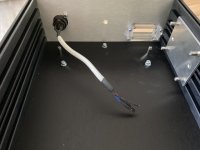 D65ABCDB-0AE7-4471-AB63-D066E7803B1C.jpeg69.4 KB · Views: 383
D65ABCDB-0AE7-4471-AB63-D066E7803B1C.jpeg69.4 KB · Views: 383
Hi PiotrL,
I built a duls mono version and sounded better by a small amount the difference is less if you use a better transformer.
I think the best compromise would be a slightly larger transformer and separate regulators for each channel, I find a good transformer is key.
Picture of the power supply of my next headphone project with a newly designed transformer..........
Regards,
Jam
I built a duls mono version and sounded better by a small amount the difference is less if you use a better transformer.
I think the best compromise would be a slightly larger transformer and separate regulators for each channel, I find a good transformer is key.
Picture of the power supply of my next headphone project with a newly designed transformer..........
Regards,
Jam
Attachments
Last edited:
Hi PiotrL,
I built a duls mono version and sounded better by a small amount the difference is less if you use a better transformer.
I think the best compromise would be a slightly larger transformer and separate regulators for each channel, I find a good transformer is key.
Picture of the power supply of my next headphone project with a newly designed transformer..........
Regards,
Jam
Thanks Jam. Are you saying that the 120W transformer is not big enough? That's already a quarter of a power that I have in my F5 build 🙂 I guess that having a way to design and build one's transformer separates the experience between the average and the best, but our choices are limited to Toroidy, Antek and a handful of others.
PiotrL,
120 VA is more than enough I would not go below 75VA. In your case using separate regulators for each channel would bring the most benefit IMHO.
Jam
120 VA is more than enough I would not go below 75VA. In your case using separate regulators for each channel would bring the most benefit IMHO.
Jam
meldano,
I would go for better matching first before changing source resistors. Any excess offset can be trimmed with the offset pot while the servo is disconnected.
Jam
I would go for better matching first before changing source resistors. Any excess offset can be trimmed with the offset pot while the servo is disconnected.
Jam
Last edited:
That is not always true as power supply impedance come into play particularly in power amplifiers where you are close to the minimum requirements in regards to VA.
Hint:Think about the transformer as a reservoir.........
Jam
Hint:Think about the transformer as a reservoir.........
Jam
Last edited:
That depends also on what comes after the transformer.
And the way the transformer is made.
The amp sees the impedance of the last element in the PSU.
So it depends how good the regulator is to supply fluctuations and load transients.
And of course it also depends on the amp itself.
Patrick
And the way the transformer is made.
The amp sees the impedance of the last element in the PSU.
So it depends how good the regulator is to supply fluctuations and load transients.
And of course it also depends on the amp itself.
Patrick
- Home
- Amplifiers
- Pass Labs
- Pass HPA-1, what do we know?
